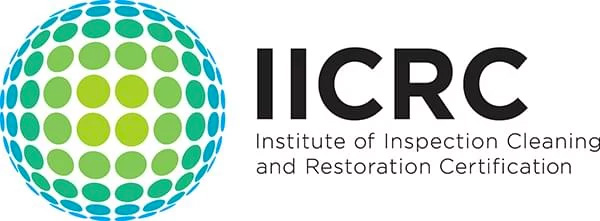How to Improve Indoor Air Quality
Poor indoor air quality and exposure to mold can lead to various health problems, including allergies, asthma, respiratory infections, and other illnesses. By improving indoor air quality and preventing mold growth, you can help protect the health of yourself and your family.
Improving indoor air quality and preventing mold growth in your home is crucial for maintaining a healthy and comfortable living environment, reducing energy costs, increasing property value, and preventing property damage.
6 Ways to Boost Indoor Air Quality
A home with improved indoor air quality and no mold is likely to have a higher property value than one with poor air quality and visible mold growth. Here are the 6 best ways to improve indoor air quality:
Change the AC Filter
Changing the air conditioning (AC) filters regularly can help improve indoor air quality by removing particles such as dust, pollen, and other allergens from the air.
As air flows through the AC system, the filter traps particles and prevents them from circulating through the indoor air. Over time, the filter becomes clogged with these particles and loses effectiveness.
If the filter is not changed regularly, it can become a breeding ground for bacteria and mold, further reducing indoor air quality and potentially causing health problems for individuals with respiratory issues.

By changing the AC filter regularly, ideally every three months, homeowners can ensure that the air circulating through their homes is clean and healthy. This can help reduce the risk of allergies, asthma, and other respiratory problems caused by indoor air pollution.
Check the Air Ducts
Checking air ducts is an important step in improving indoor air quality because ductwork can become dirty and contaminated over time, leading to poor indoor air quality.
Air ducts are responsible for distributing conditioned air throughout a building. If the ducts are dirty, they can become a breeding ground for mold, bacteria, and other harmful contaminants. These contaminants can then be circulated throughout the building, leading to poor indoor air quality and potential health problems for occupants.
Checking air ducts involves inspecting them for signs of dirt, mold, and other contaminants. A professional HVAC technician can clean the ducts and remove contaminants if any issues are found.
Regularly checking air ducts can help improve indoor air quality by ensuring that the air circulated throughout the building is clean and healthy. This can reduce the risk of allergies, asthma, and other respiratory problems caused by indoor air pollution.
Consider the Kitchen Vents
Cooking can produce a variety of pollutants, such as smoke, steam, and grease, which can negatively impact indoor air quality. Kitchen vents, also known as range hoods, are designed to remove pollutants and odors from the air by venting them to the outside.

By using a kitchen vent while cooking, you can prevent these pollutants from circulating throughout your home and potentially causing health problems. Choosing a properly sized vent for your range and having an adequate airflow rate are important when considering kitchen vents.
By considering kitchen vents and using them regularly, you can help improve indoor air quality by removing pollutants and odors. This can reduce the risk of respiratory problems and other health issues caused by indoor air pollution.
Control the Humidity
Controlling humidity is an important step in improving indoor air quality because high levels of humidity can lead to the growth of mold, bacteria, and other harmful contaminants. In contrast, low humidity levels can cause dry skin, respiratory problems, and other health issues.
Ideally, indoor humidity should be kept between 30% and 60%. To control humidity, you can use a dehumidifier in areas of your home prone to high humidity, such as the bathroom or basement. Additionally, you can use an air conditioner to lower humidity levels in the summer.
By controlling humidity, you can reduce mold growth and other harmful contaminants in your home. This can help improve indoor air quality and reduce the risk of respiratory problems, allergies, and other health issues caused by indoor air pollution.
However, it's important to note that extremely low humidity levels can also cause health problems. If the air in your home is too dry, you can use a humidifier to add moisture to the air and improve indoor air quality.
Keep the Rugs and Carpets Clean
Keeping rugs and carpets clean is an important step in improving indoor air quality because they can trap dust, dirt, and other contaminants that can negatively impact air quality.
.jpg)
Keeping rugs and carpets clean can prevent the buildup of these contaminants and improve indoor air quality. Vacuuming regularly, ideally, once a week or more, can remove dirt, dust, and other particles from rugs and carpets. It's also important to clean spills and stains immediately to prevent them from setting and causing odors or mold growth.
In addition to regular vacuuming and cleaning, it's recommended to have rugs and carpets professionally cleaned at least once a year to remove deep-seated dirt and contaminants.
Keeping rugs and carpets clean can improve indoor air quality and reduce the risk of respiratory problems, allergies, and other health issues caused by indoor air pollution.
Get Some Indoor Plants
Getting some indoor plants is a natural and effective way to improve indoor air quality. Plants absorb carbon dioxide and release oxygen, but they can also remove harmful pollutants from the air, such as benzene, formaldehyde, and trichloroethylene.
Some of the best plants for improving indoor air quality include spider plants, peace lilies, snake plants, and pothos. These plants are relatively easy to care for and can help remove pollutants from the air.
However, it's important to note that some indoor plants can release pollen or other allergens, exacerbating respiratory problems for individuals with allergies or asthma. If you have allergies or respiratory issues, it's recommended to research plants that are safe for you to have in your home.
Overall, adding indoor plants to your home can effectively improve indoor air quality naturally and create a healthier living environment.
Bottom Line
Exposure to mold and poor indoor air quality can cause various health problems, including respiratory issues, allergies, headaches, and fatigue. Some molds can even produce toxic substances that can cause more serious health problems.
It is highly recommended that you call in experts like Markham Services to address mold problems in your home to ensure that the issue is properly handled and the risk of health problems or future growth is minimized.
Regular maintenance, cleaning, and monitoring can help ensure that your home remains mold-free and has high-quality indoor air.


